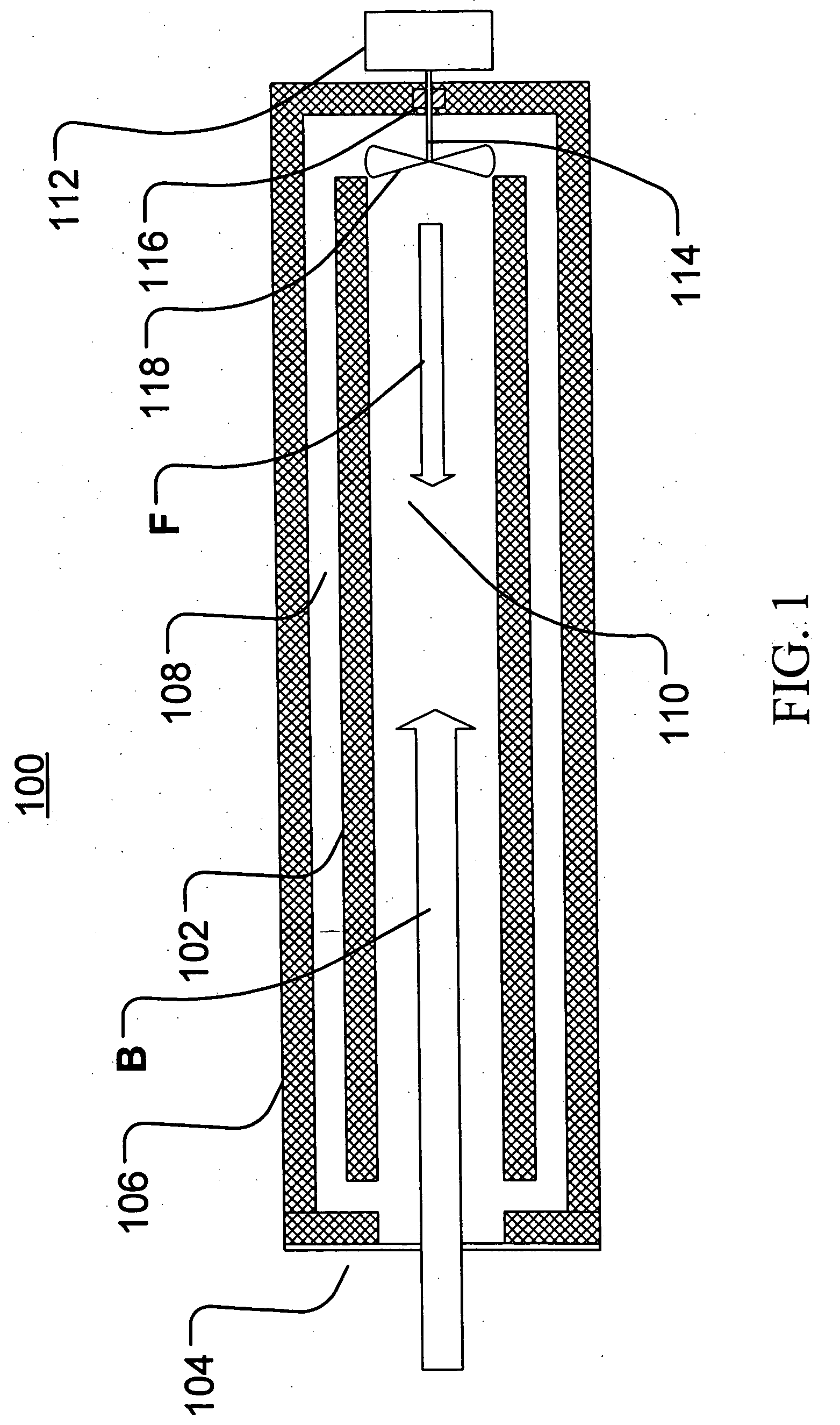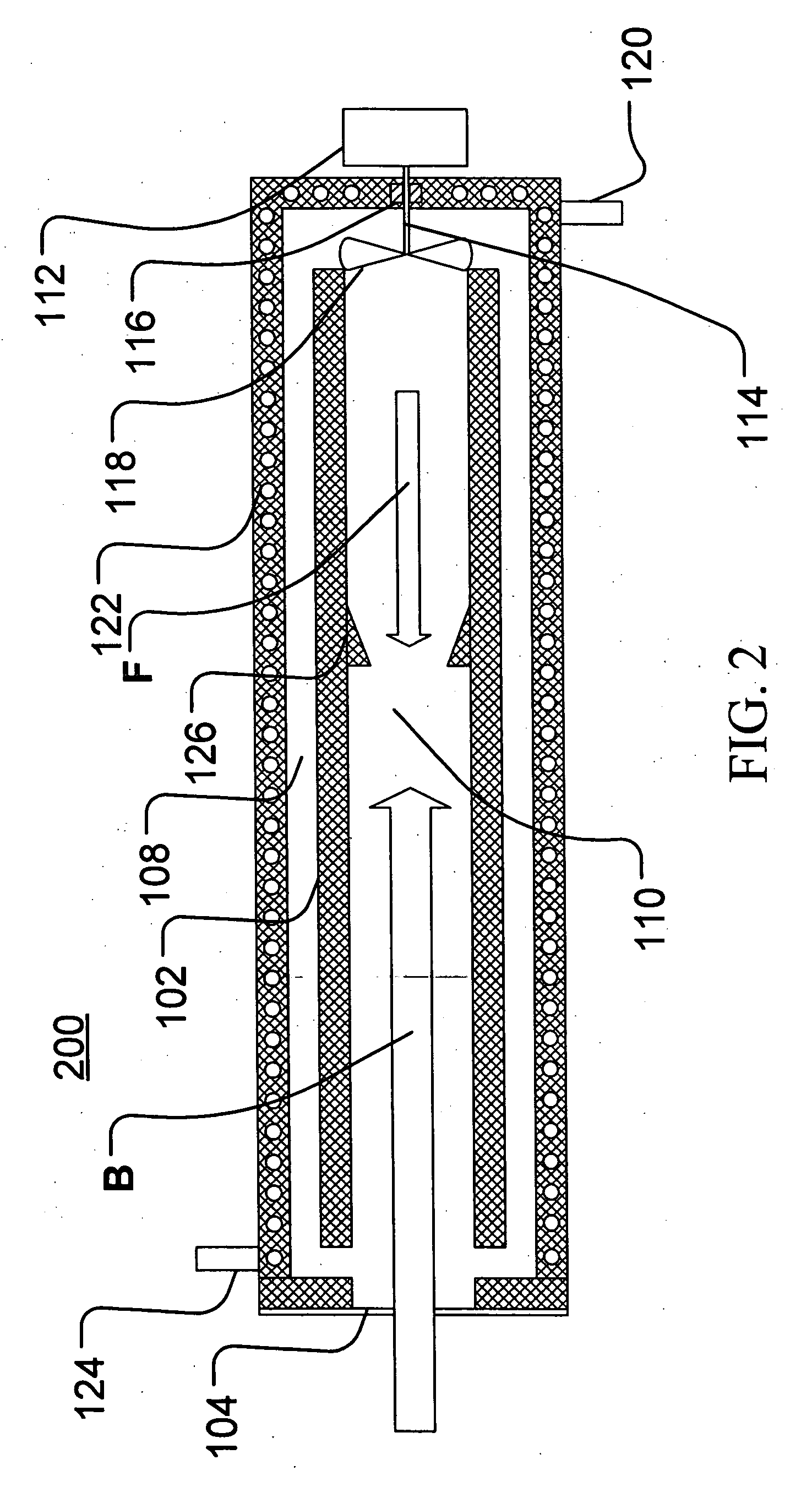Forced convection target assembly
a force-convection and target technology, applied in the direction of reactor fuel elements, separation processes, particle separator tubes, etc., can solve the problems of high cost, high maintenance and operation costs, and high cost of high-skilled technical staff, so as to increase the beam yield and increase the heat transfer
- Summary
- Abstract
- Description
- Claims
- Application Information
AI Technical Summary
Benefits of technology
Problems solved by technology
Method used
Image
Examples
Embodiment Construction
[0022] The particle beam must enter the target, preferably with as little energy loss as possible. The particle beam generation (in the accelerator) and transport to the target must occur in a vacuum to minimize the loss of particles. The high-pressure environment of the target must be isolated from this vacuum yet still allow the particle beam to enter the target chamber. One method of forming a beam window or port utilizes a pair of thin metal foils between which passes helium or another cooling gas to remove the heat produced in the foils by the passage of the particle beam. Another method of forming a beam window or port utilizes a single thin metal foil supported by a water cooled structure referred to as a grid as disclosed in U.S. Pat. No. 5,917,874, the contents of which are hereby incorporated in its entirety. This grid will, however, partially intercept the particle beam, thereby reducing the number of beam particles that will actually enter the target and reach the target...
PUM
 Login to View More
Login to View More Abstract
Description
Claims
Application Information
 Login to View More
Login to View More - R&D
- Intellectual Property
- Life Sciences
- Materials
- Tech Scout
- Unparalleled Data Quality
- Higher Quality Content
- 60% Fewer Hallucinations
Browse by: Latest US Patents, China's latest patents, Technical Efficacy Thesaurus, Application Domain, Technology Topic, Popular Technical Reports.
© 2025 PatSnap. All rights reserved.Legal|Privacy policy|Modern Slavery Act Transparency Statement|Sitemap|About US| Contact US: help@patsnap.com



